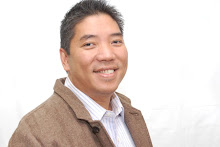By Ambeth Ocampo
Philippine Daily Inquirer
First Posted 01:11:00 11/14/2008
Most Read
EACH YEAR WHEN we celebrate Independence Day, we hear a few voices of dissent that seek to change the date from June 12 to something else. People of the post-war generation remember that our Independence Day used to be celebrated on July 4, like that of the United States of America, until President Diosdado Macapagal moved it to June 12. I won't repeat the columns on the other dates proposed for our Independence Day, let's just say that the choice of date is often dependent on one's ideological or historiographical outlook.
Choosing the date to celebrate anything can be quite arbitrary. If we follow ancient Chinese example, we are already a year old at birth because they reckon from time in the womb. We have people eager to be the first to greet birthday celebrants and wait till the clock hits 12:01 a.m. to send a text or ring the sleepy person. Some people say we shouldn't celebrate birthdays in advance, while others say we shouldn't have the celebration after the actual date. All this can be quite confused and confusing.
I will bore you with a bit of institutional history today because in the case of the National Historical Institute, which celebrated the 75th year of its foundation a few weeks back, there has to be some kind of reckoning. The NHI as we know it today was established by President Ferdinand Marcos in 1972, following the reorganization of government after the declaration of martial law. If we take Marcos and 1972 as a reference point, then the NHI is far from 75 years old. But the institute has chosen to trace its birth all the way back to 1933, with the establishment of the Philippine Historical Research and Markers Committee (PHRMC).
Many people still refer to the NHI as a commission because it used to be the National Historical Commission before it became an institute in 1972. Before 1972, there used to be a number of historical commissions created by law to commemorate the birth centennials of our heroes of the late 19th century: Jose Rizal, Andres Bonifacio, Apolinario Mabini, Juan Luna, Mariano Gomez, Jose Burgos, Jacinto Zamora, etc. At one point, all these commissions were merged into one National Heroes Commission. Then it became more general as the National Historical Commission, until someone decided to give it a more academic tone by renaming it as the National Historical Institute. So far its selective institutional history is based on events and achievements during the terms of its different chairs: Encarnacion Alzona, Carmen Guerrero Nakpil, Esteban de Ocampo, Serafin D. Quiason, Samuel K. Tan, Pablo S. Trillana and yours truly.
To complicate matters, we go back to U S Governor General Frank Murphy who issued Executive Order 451 in 1933, creating the PHRMC whose job was to identify and mark "historic antiquities" in the capital, Manila, and later throughout the Philippines as a first step in their preservation. The members of this committee were: Walter Robb, an American journalist interested in the history of Manila as chair, the pioneering pre-historian of the Philippines H. Otley Beyer, the Spanish Jesuit Fr. Miguel Selga, SJ and dean Edward Hyde. The Filipino members of the committee were: Jaime C. de Veyra, Conrado Benitez and Eulogio B. Rodriguez.
When the Philippine Commonwealth was established in 1935, the PHRMC was replaced by the Philippines Historical Committee that had basically the same functions as the former, with the additional responsibilities of acquiring antiquities owned by private individuals and repairing government-owned antiquities. We have not yet found any material on the activities of the committee during the war years, and it is hoped that research on the Commission of Education, Health and Public Welfare during the Laurel presidency will fill in the gap.
Six months after independence and the inauguration of the Third Philippine Republic, on Jan. 20, 1947, the Philippines Historical Committee was reconstituted and placed first under the Office of the President, and later transferred to the Department of Education. The PHC was very active in the post-war years when the country was rebuilding from the ashes of the war. It was a time not just for physical reconstruction but also the reconstruction of the past as a means to form nationhood. Over 400 markers were installed all over the archipelago by the PHC, and most important, it acquired places and relics of heroes. The PHC was also responsible for the naming and renaming of streets, plazas, towns and other public places.
All these functions are still undertaken by the NHI in addition to the preservation of historical sites and structures, serving as lead agency for the commemorations of Independence Day, Rizal Day, etc.
Whether we reckon 75 or 36 years, the question of relevance crops up and the words of Carmen Guerrero Nakpil, who was appointed chairman in 1965, still rings true:
"In a country where poverty, underproduction, unemployment and corruption are the chief problems, what justification can there be for a national (cultural office) devoted to history? Surely such a question is rhetorical and does not need an answer, for it must be obvious to the most materialistic and pragmatic of us that the past is necessary to make the present viable and the future possible."
* * *
Comments are welcome at aocampo@ateneo.edu
Thursday, November 13, 2008
Subscribe to:
Post Comments (Atom)

No comments:
Post a Comment